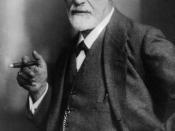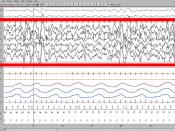When we sleep we do much more than just "rest our weary bones"; we tap into our subconscious mind (Ullman and Zimmerman 1979). The subconscious has much to offer about oneself. The average human being spends one third of their life in sleep and during each sleep approximently two hours is spent dreaming (Ullman and Zimmerman 1979). These dreams are important because they are the voice of our subconscious. Dreams and theories on dreams go as far back as 2000 BC in Egypt. One of the first organized glimpses into the diagnostics of a dream came in an Egyptian book called the Chester Beatty Papyrus, its author is unknown. In ancient Greece dreams were believed to be messages from the gods. In later centuries, Hippocrates (a Greek physician), Aristotle (a Greek philosopher), and Galen (a Greek philosopher) believed that dreams often contained physiological information that may be cause of future illnesses.
Artemeidorus documented and interpreted thousands of dream reports in his book Oreiocritica (meaning "critical dreams" in Greek). His ideas were later abandoned, and no further progress was made in the study of dreams until the late 1800s. That was until Sigmund Freud wrote his book The Interpretations of Dreams in 1900. After its publishing, dreams became a popular topic once again. The modern day idea that dreams come from our daily life is partially accurate. When I say "partially" I mean only a specific aspect of dreams comes from daily life interactions. The imagery in dreams comes from daily life (Freud 1900). You must understand that the subconscious can only talk in a language that the conscious can understand, therefore it uses imagery. So to put it in lay terms "You'll never see an object in dream that you haven't seen in your daily life"(Ullman and Zimmerman 1979).


